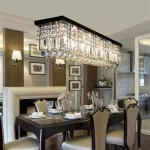Asian Wall Art for Living Room
Asian wall art offers a diverse and captivating way to enhance the aesthetic appeal of a living room. From traditional calligraphy and landscape paintings to contemporary interpretations of ancient motifs, Asian art provides a wide range of options to suit various design preferences and create a unique ambiance. Incorporating Asian wall art can introduce a touch of serenity, elegance, and cultural richness into a living room space.
Choosing the Right Style
Selecting the appropriate style of Asian wall art is crucial for creating a cohesive and visually appealing living room. Traditional styles often feature intricate details, rich colors, and symbolic imagery. Japanese woodblock prints, Chinese silk scrolls, and Korean porcelain paintings exemplify traditional Asian art forms. For a more modern approach, consider minimalist ink paintings, abstract depictions of nature, or photographic prints showcasing Asian cityscapes. The chosen style should complement the existing décor and reflect the homeowner's personal taste.
Considering the Color Palette
The color palette of Asian wall art plays a significant role in setting the mood and atmosphere of a living room. Traditional Asian art often utilizes a combination of vibrant and muted colors. Red, gold, and black are frequently used to symbolize prosperity, good fortune, and power. Blue, green, and white represent tranquility, harmony, and purity. When selecting Asian wall art, consider the existing color scheme of the living room and choose pieces that either complement or create an intentional contrast with the surrounding décor. The color palette can significantly influence the overall visual impact of the artwork and the room itself.
Material and Framing
The material and framing of Asian wall art are essential factors to consider. Traditional materials such as silk, rice paper, and wood contribute to the authenticity and cultural significance of the artwork. These materials often require specialized framing techniques to ensure preservation and enhance presentation. Contemporary Asian art may utilize canvas, metal, or photographic paper, offering more flexibility in framing options. Choosing the appropriate frame material and style can further enhance the artwork's visual appeal and complement the living room décor. The frame should not overpower the artwork but rather serve as a complementary element that enhances its presentation.
Placement and Arrangement
The placement and arrangement of Asian wall art are crucial for maximizing its impact within the living room. Consider the size and scale of the artwork in relation to the surrounding furniture and wall space. A large statement piece can serve as a focal point above a sofa or fireplace. Smaller pieces can be grouped together to create a gallery wall, showcasing a collection of related artwork. The arrangement should create visual balance and harmony within the room, drawing the eye and enhancing the overall aesthetic appeal. Careful consideration of placement can transform the living room into a curated space that reflects the homeowner's appreciation for art and culture.
Incorporating Asian-Inspired Decor
To further enhance the impact of Asian wall art, consider incorporating other Asian-inspired décor elements into the living room. Decorative items such as cushions, throws, vases, and sculptures can complement the artwork and create a cohesive theme. Natural materials like bamboo, wood, and stone can add to the overall aesthetic and contribute to a sense of tranquility and serenity. Incorporating these elements can create a harmonious and culturally rich atmosphere within the living room, extending the influence of the artwork beyond its framed boundaries.
Lighting and Wall Color
Proper lighting and wall color can significantly impact the visibility and appreciation of Asian wall art. Natural light can enhance the colors and textures of the artwork, while strategically placed artificial lighting can highlight specific details and create a dramatic effect. The wall color should serve as a backdrop that complements the artwork without overpowering it. Neutral tones such as beige, gray, or off-white often work well, allowing the artwork to take center stage. Careful consideration of lighting and wall color can optimize the visual impact of Asian wall art within the living room, ensuring that it is showcased to its full potential.
Maintenance and Preservation
Maintaining and preserving Asian wall art is essential for ensuring its longevity and continued beauty. Avoid exposing the artwork to direct sunlight, excessive humidity, or extreme temperatures. Regular dusting with a soft cloth or brush can help prevent the accumulation of dirt and debris. For delicate materials such as silk or rice paper, consult a professional art conservator for specialized cleaning and preservation advice. Proper care and maintenance will help protect the artwork from damage and ensure that it remains a treasured piece for years to come.

Amazon Com Murwall Floral Wallpaper Vintage Flower Wall Mural Magnolia Blossom Art Asiatic Home Decor Living Room Bedroom Handmade

Asian Inspired Bedroom Wall Decor Japanese Art Print Boho Etsy New Zealand

Buy Wholesale Asian Inspired Living Room Set Of 3 Wall Art Prints

Yellow Asian Wall Art Lotus Blossom Painting Canvas Print For Sitting Room Clearhalo

Exquisite Asian Wall Art Intricate Metal And Wood Frames

Designart Pink Asian Landscape In Minimalism Art Picture Framed Wall Living Room Walmart Com

Oriental Furniture 36 In X 72 Quot Plum Blossom Chinese Painting Wall Art Silk Pblos 36x72 The Home

Chinese Wall Art Sold On Temu United States

New Chinese Style Metal Landscape Small Family Background Wall Decoration Home Restaurant Art Decor Living Room And For Price Made In Com

Canvas Wall Art Asian Cherry Tree Coloray Co








